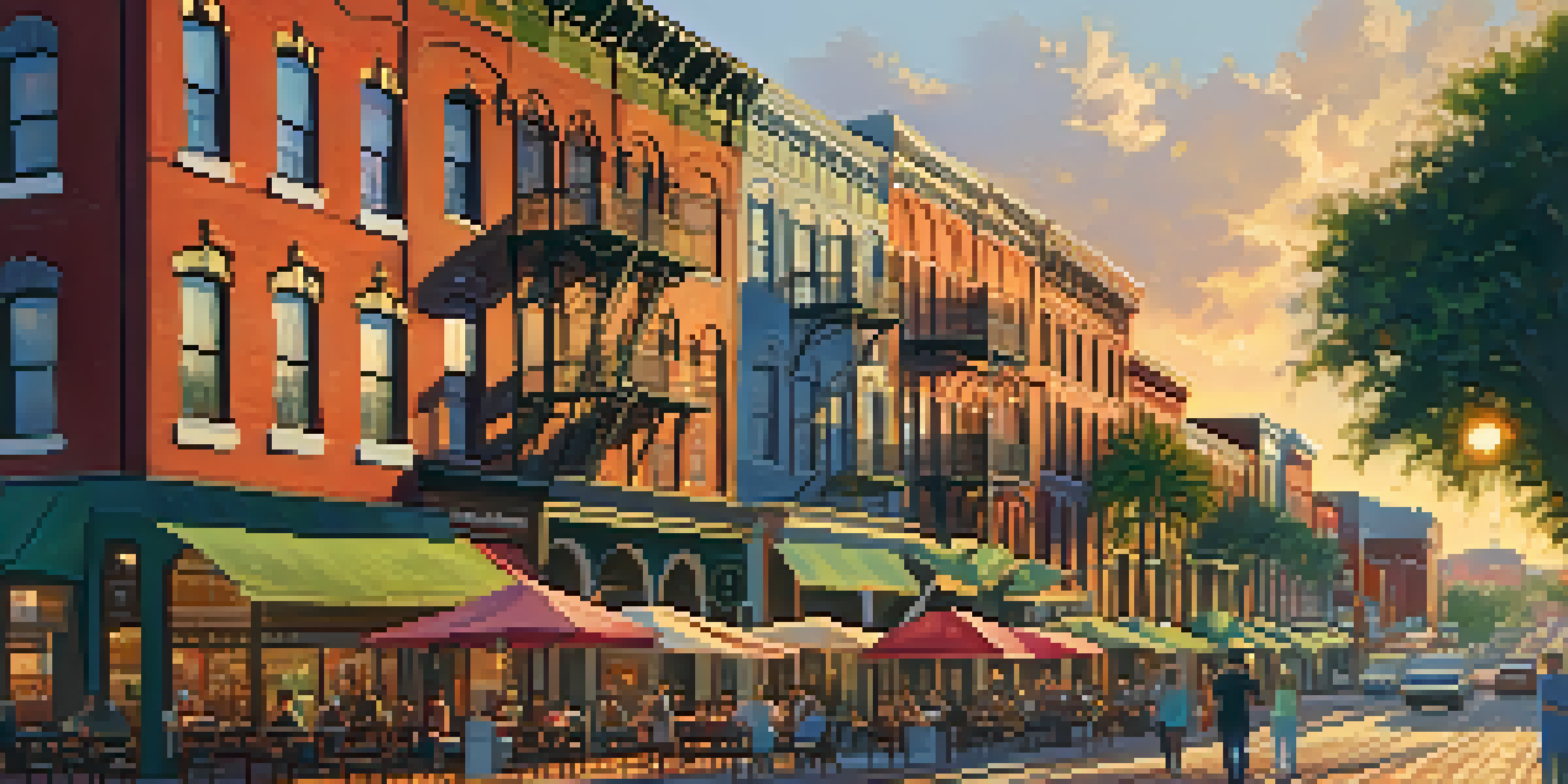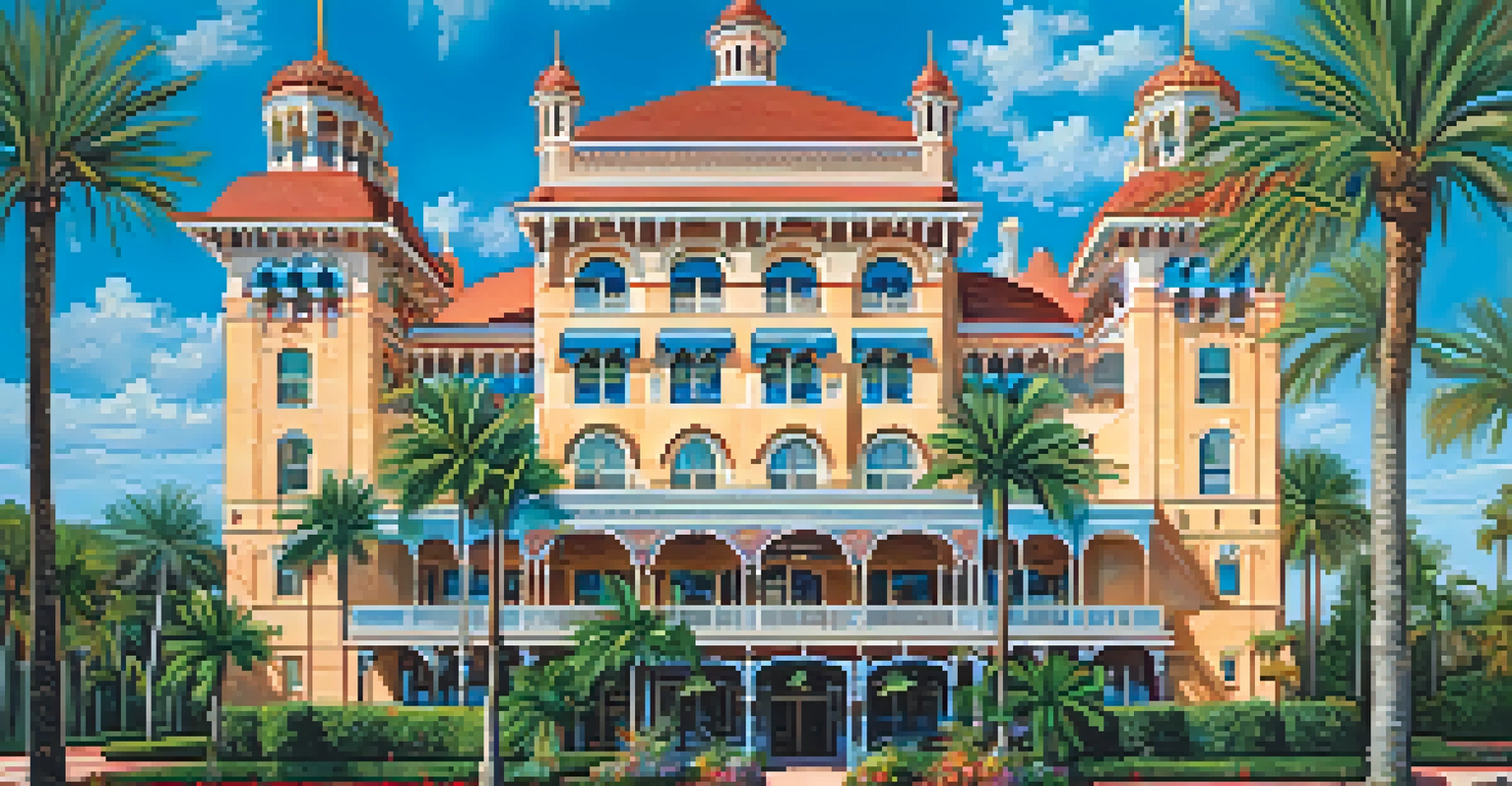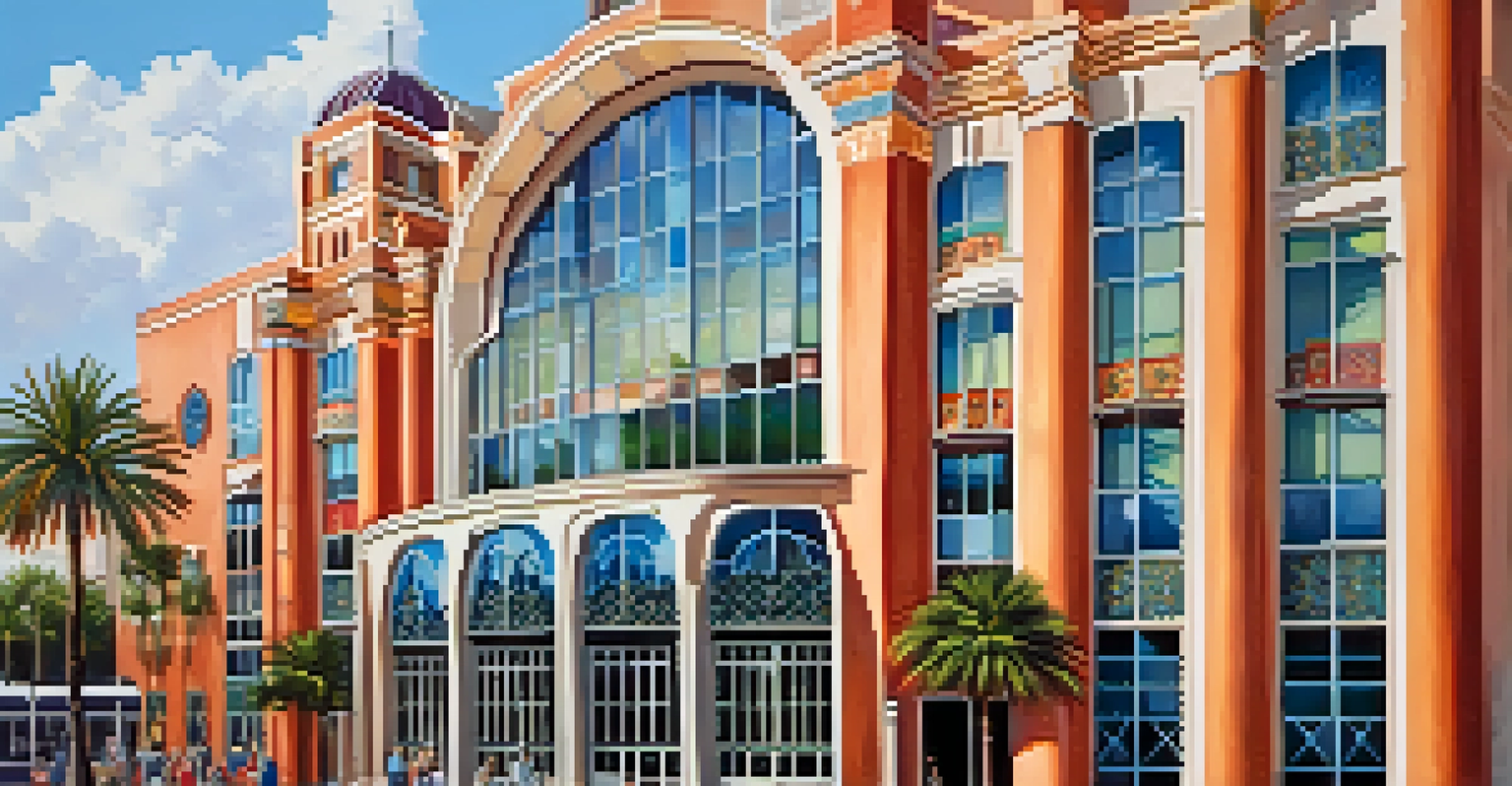The Influence of Spanish Architecture in Tampa's Landmarks

The Historical Roots of Spanish Architecture in Tampa
Tampa's architectural landscape is deeply influenced by its Spanish heritage, dating back to the early 16th century. The arrival of Spanish explorers brought with it a unique blend of styles that have evolved over centuries. This historical connection has laid the groundwork for many of Tampa's most iconic structures, weaving a narrative that reflects both cultural pride and architectural innovation.
Architecture is a visual art, and the buildings speak for themselves.
Understanding the historical context allows us to appreciate how Spanish architecture has shaped the city's identity. For instance, the Spanish colonial style emphasizes symmetry, stucco exteriors, and red-tiled roofs, which can be seen in various buildings across the city. This architectural language tells a story of adaptation and resilience, reflecting the community's evolution over time.
As we delve into Tampa's landmarks, it's essential to recognize the lasting impact of this vibrant architectural tradition. The fusion of Spanish design with local influences has created a unique aesthetic that defines the city's character. From the historic Ybor City to modern developments, the Spanish architectural influence is a thread that ties Tampa's past to its present.
Ybor City: A Cultural Mosaic of Spanish Influence
Ybor City, once a bustling cigar-manufacturing hub, showcases the heart of Tampa's Spanish architectural legacy. The neighborhood's brick buildings and wrought-iron balconies reflect the Spanish colonial style, creating a charming atmosphere that attracts visitors and locals alike. Walking through its streets is like stepping back in time, where the influence of Spanish architecture permeates every corner.

Historical landmarks such as the Centro Asturiano de Tampa and the El Centro Espanol de Tampa exemplify this rich architectural heritage. These buildings not only serve as cultural institutions but also stand as testaments to the city's dedication to preserving its history. Their intricate designs and vibrant colors invite exploration, making Ybor City a must-visit destination.
Spanish Heritage Shapes Tampa's Identity
Tampa's architectural landscape is profoundly influenced by its Spanish heritage, which blends historical styles with modern innovations.
Moreover, Ybor City's fusion of Spanish, Italian, and Cuban cultures creates a unique tapestry that enhances its architectural appeal. The blend of these influences is evident in its lively streets, where cafes and shops buzz with life. This cultural diversity, rooted in Spanish architecture, makes Ybor City a dynamic part of Tampa's identity.
The Tampa Bay Hotel: A Spanish Revival Masterpiece
The Tampa Bay Hotel, now part of the University of Tampa, is one of the most stunning examples of Spanish Revival architecture in the area. Built in 1891, its Moorish-style turrets, grand arches, and intricate tile work reflect the romanticized vision of Spanish architecture during the Gilded Age. This historic hotel stands as a symbol of Tampa's growth and ambition during the late 19th century.
Preservation is a form of heritage that allows us to understand our past and build a better future.
As you approach the hotel, the striking façade immediately captures your attention, with its vibrant colors and ornate detailing. The design was inspired by the Spanish Renaissance, showcasing the era's fascination with exotic styles. The hotel's lush gardens and opulent interiors further enhance its appeal, making it a favorite spot for both tourists and locals.
Today, the Tampa Bay Hotel serves as a cultural hub, housing the Henry B. Plant Museum. Visitors can explore the hotel's rich history and appreciate its architectural splendor, which continues to inspire admiration. The blend of history and beauty encapsulates the essence of Spanish architecture in Tampa, inviting everyone to experience its legacy.
The Spanish Influence on Tampa's Modern Architecture
While historical landmarks are often the focus, Spanish architecture also influences modern designs throughout Tampa. Contemporary buildings, such as the Straz Center for the Performing Arts, incorporate elements of Spanish-style architecture, blending tradition with innovation. These structures pay homage to the past while meeting the needs of a growing city.
Architects today draw inspiration from Spanish design principles, such as open spaces, arches, and tile work, to create inviting environments. This fusion of styles can be seen in residential neighborhoods, commercial spaces, and public buildings alike. By embracing these elements, Tampa continues to celebrate its rich cultural heritage while fostering a vibrant, modern community.
Ybor City: A Cultural Architectural Hub
Ybor City showcases the heart of Tampa's Spanish architectural legacy, with its charming brick buildings and vibrant cultural diversity.
The integration of Spanish architecture into new designs reflects a commitment to preserving the city's identity amid rapid development. As Tampa evolves, the influence of Spanish architecture remains a vital part of its story, ensuring that the city's roots are honored in every new endeavor.
The Role of Festivals in Celebrating Spanish Heritage
Tampa's cultural festivals play a significant role in celebrating its Spanish heritage, showcasing the city's architectural gems. Events like the Fiesta Day and Gasparilla Festival not only highlight the community's vibrant spirit but also emphasize the importance of preserving architectural history. These festivities invite locals and visitors to explore the city's landmarks, fostering a sense of connection to Tampa's roots.
During these celebrations, many landmarks serve as backdrops for various activities, bringing architecture to life in a unique way. For instance, the historic streets of Ybor City become alive with music, art, and dance, allowing attendees to immerse themselves in the culture. This engagement with the architecture enhances appreciation for the city's historical significance.
Furthermore, festivals create opportunities for storytelling, where the history of Spanish architecture is shared through guided tours and exhibitions. These events not only educate participants but also encourage community pride in Tampa's diverse heritage. By linking architecture with cultural celebrations, Tampa reinforces its identity and keeps its Spanish influence alive.
Preservation Efforts for Spanish Architectural Landmarks
Preserving Tampa's Spanish architectural landmarks is crucial for maintaining the city's historical narrative. Organizations and local governments work tirelessly to protect these structures from deterioration and modern encroachments. Through careful restoration and maintenance, they ensure that future generations can appreciate the beauty and significance of these architectural treasures.
Efforts like the Tampa Historic Preservation Commission play a vital role in safeguarding these landmarks. They advocate for policies that promote preservation while raising awareness about the importance of maintaining architectural heritage. Community involvement is also essential, as local residents often champion preservation initiatives, emphasizing their love for the city's unique character.
Preservation Efforts for Historical Landmarks
Community involvement and dedicated organizations work to preserve Tampa's Spanish architectural landmarks, ensuring their significance for future generations.
Moreover, educational programs and workshops help raise awareness about the value of these landmarks, engaging the public in preservation efforts. By fostering a sense of ownership and involvement, Tampa's residents can contribute to protecting their architectural legacy. This collective commitment ensures that the Spanish influence on Tampa's landscape endures for years to come.
The Future of Spanish Architecture in Tampa
As Tampa continues to grow, the future of Spanish architecture in the city remains promising. Urban developers and architects are increasingly recognizing the importance of incorporating cultural influences into their designs. This trend not only enhances the aesthetic appeal but also strengthens the community's identity, ensuring that the spirit of Spanish architecture persists in new projects.
Innovative designs are emerging that blend modern functionality with traditional Spanish elements, creating spaces that are both beautiful and practical. This approach reflects a commitment to honoring the past while embracing the future, allowing Tampa to maintain its unique character amid urban expansion. The integration of these styles speaks to the city's dedication to preserving its heritage.

Looking ahead, the collaboration between architects, developers, and the community will be key in shaping Tampa's architectural landscape. By prioritizing the preservation of Spanish influences, Tampa can ensure that its landmarks remain integral to the city's identity. The future holds exciting possibilities as the legacy of Spanish architecture continues to inspire and influence the city’s evolution.